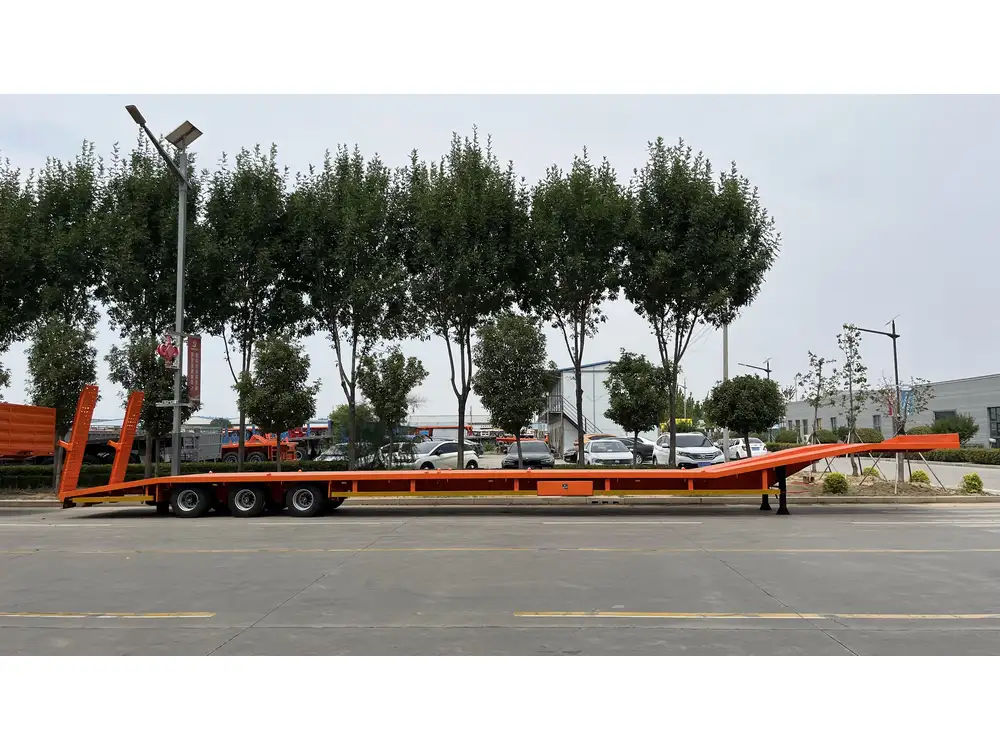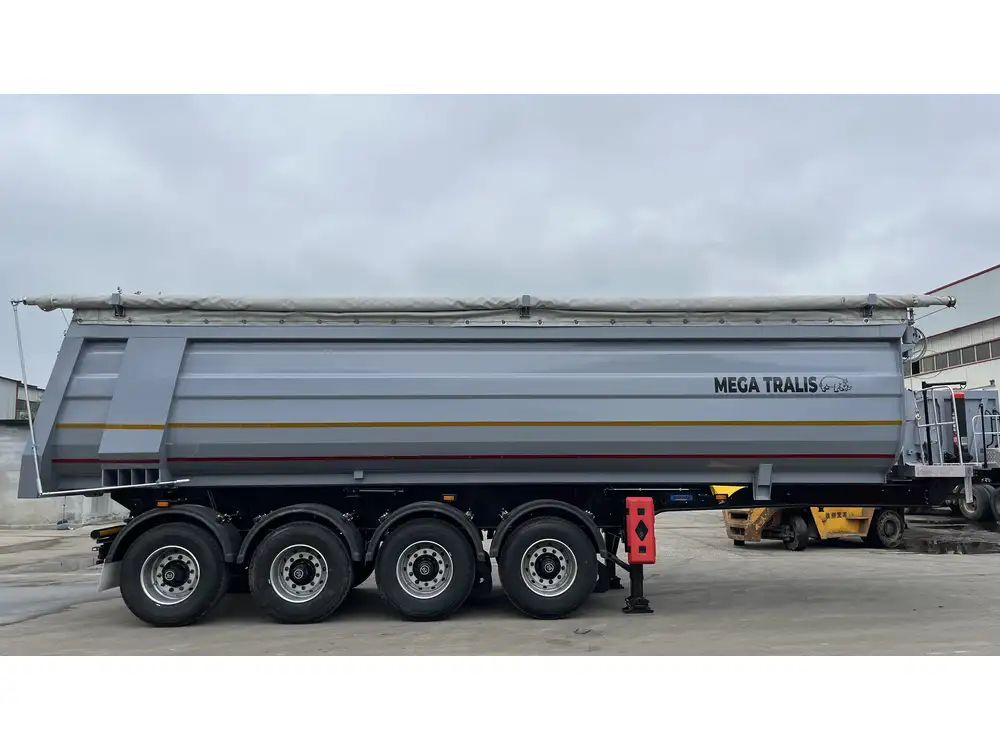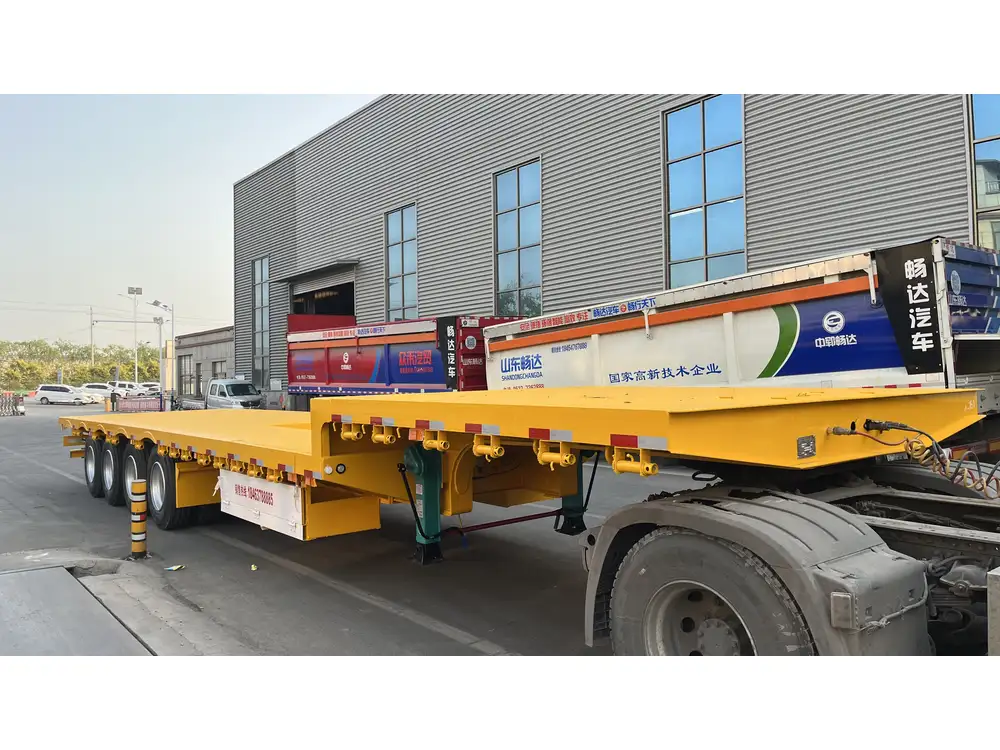When it comes to hauling heavy loads, particularly in construction, landscaping, or agricultural applications, understanding which dump trailer can lift the most weight is essential. Dump trailers come in various designs, sizes, and configurations, and selecting the right one can significantly impact efficiency and safety. Let’s delve into the factors influencing lifting capacity, compare different models, and outline what you should consider when choosing a dump trailer.
Understanding Dump Trailers: Types and Applications
Before determining which dump trailer lifts the most weight, it’s vital to comprehend the various types available in the market:
| Type of Dump Trailer | Description | Typical Uses |
|---|---|---|
| Standard Dump Trailers | Conventional trailers with a single or dual axle. | General hauling, construction. |
| Gooseneck Dump Trailers | Equipped with a gooseneck hitch for increased stability. | Heavy-duty construction, farms. |
| Tilt Trailers | Slope downwards for easier loading and unloading. | Landscaping, equipment transport. |
| Hydraulic Dump Trailers | Utilize hydraulic systems to raise the dump bed. | Construction, large material transport. |
| Bottom Dump Trailers | Feature a bottom discharge mechanism for controlled unloading. | Aggregate and materials handling. |
Each type boasts distinct advantages, which directly tie into weight capacity and operational efficiency.
Factors Affecting Weight Capacity
To ascertain which dump trailer lifts the most weight, several critical factors come into play:
Material and Construction Quality:
The materials used in the frame, bed, and axle significantly influence both durability and load capacity. High-grade steel offers superior strength.Axle Configuration:
The number and arrangement of axles play a pivotal role in a trailer’s weight distribution and lifting capacity. Dual trailer axles generally allow for higher weight limits.Hydraulic System:
The quality and design of the hydraulic lift mechanism determine how efficiently and safely a trailer can raise its load. A robust hydraulic system can elevate more weight.Bed Size and Design:
A larger bed not only accommodates more material but also influences the overall weight capacity. Specialized designs (like high sides) can assist in maximizing load volume.Weight Ratings:
Each dump trailer comes with specific weight ratings, including Gross Vehicle Weight Rating (GVWR), Payload Capacity, and Curb Weight. Understanding these ratings enables more informed decisions.

Lifting Capacity Breakdown
When comparing trailers, it’s essential to acknowledge their listed weight capacities. Here’s a comparison of typical weight capacities across various types:
| Type of Dump Trailer | Average Weight Capacity | Ideal Load Types |
|---|---|---|
| Standard Dump Trailers | 7,000 – 14,000 lbs | Topsoil, gravel, debris. |
| Gooseneck Dump Trailers | 14,000 – 20,000 lbs | Heavy equipment, dirt. |
| Tilt Trailers | 5,000 – 10,000 lbs | Small machinery, lighter materials. |
| Hydraulic Dump Trailers | 10,000 – 16,000 lbs | Mixed materials, aggregates. |
| Bottom Dump Trailers | 20,000 lbs and above | Heavy aggregates, sand. |
Understanding typical weight capacities provides insight into which type is best suited for specific tasks.
Comparing Popular Dump Trailer Models
While specific weights can vary by manufacturer and design, here are some popular dump trailers known for their lifting capacities:
1. Big Tex 14DX
- Type: Dual-axle standard dump trailer.
- Weight Capacity: 14,000 lbs.
- Key Features: Durable steel construction, ramp gate, and a reliable hydraulic lift system.
- Application: Well-suited for small to medium construction jobs.

2. PJ Trailers 12′ Dump Trailer
- Type: Gooseneck dump trailer.
- Weight Capacity: 15,400 lbs (GVWR).
- Key Features: 10-gauge steel floor, 12,000-pound hydraulic scissor lift.
- Application: Optimal for heavy-duty hauling, especially in challenging terrains.
3. Tandem Axle Hydraulic Dump Trailer
- Type: Hydraulic dump trailer.
- Weight Capacity: Up to 16,500 lbs.
- Key Features: Easy-to-use lift system, rugged design suitable for heavy loads.
- Application: Ideal for transporting mixed materials and heavy dirt.
4. Load Trail Dump Trailer
- Type: Standard dual-axle.
- Weight Capacity: 14,000 lbs.
- Key Features: Heavy-duty frame, durable floor, and side extensions.
- Application: Versatile usage from landscaping to construction jobs.

5. Bwise 16GN Dump Trailer
- Type: Gooseneck dump trailer.
- Weight Capacity: 24,000 lbs.
- Key Features: 3-way tailgate, robust hydraulic operation.
- Application: Perfect for heavy aggregates and earth moving.
By selecting a model that fits your specific weight and operational needs, you can ensure safety and efficiency on the job.
Safety Considerations When Lifting Heavy Loads
High lifting capacities often come with increased risks. Therefore, safety considerations are paramount when using dump trailers:
- Load Distribution: Properly distributing weight across the trailer’s length and width helps maintain stability and prevents tipping.
- Regular Maintenance: Inspections of hydraulic systems, brakes, and hardware can mitigate accidental failures while in use.
- Training and Usage: Operators should be trained to follow proper loading and unloading procedures to minimize dangers.
- Weather Conditions: Dumping loads during inclimate weather can increase risk; it’s crucial to evaluate conditions before operating.
Maintenance Tips for Maximizing Payload Capacity
To ensure your dump trailer continues to operate at optimal capacity, adhering to a regular maintenance routine is vital. Consider the following tips:
- Hydraulic System Checks: Regularly inspect fluid levels and hoses for leaks or damage. Replace filters as part of routine maintenance.
- Tire Assessment: Check tire pressure and tread for wear. Under-inflated tires can lead to reduced payload capacity and increased rolling resistance.
- Frame Inspections: Look for any signs of rust, cracks, or deformation that may affect the trailer’s structural integrity.
- Electrical Systems: Ensure that the connections to your lifting mechanism (if electric) are clean and free from corrosion to prevent failures.
- Lubrication: Regularly lubricate all moving parts, including hinges and beams, to ensure seamless operation.
By investing time in maintenance, you prolong the life of your trailer and maximize its lifting capabilities.

Choosing the Right Trailer for Your Needs
When determining which dump trailer lifts the most weight and suits your needs, consider these guiding questions:
- What types of loads do I typically haul?
- What is the maximum weight I expect to lift?
- Will I be traveling on rough terrain?
- How often will the trailer be in use?
Aligning your specific requirements with the trailer features discussed ensures you select the most suitable option for your operational needs.
Conclusion
In the quest for lifting the heaviest loads with a dump trailer, myriad factors play a role, from trailer type to construction quality. By understanding the unique attributes of different dump trailers, comparing models, and emphasizing safety and maintenance, you can make informed decisions that enhance operational efficiency and safety. When considering which dump trailer lifts the most weight, prioritize both your hauling demands and the specifications of your trailer of choice, ensuring you achieve the optimal balance between capacity, performance, and reliability.



